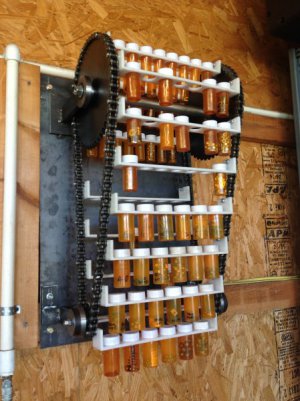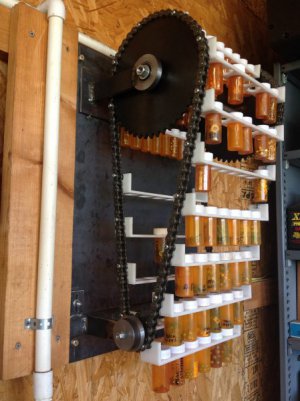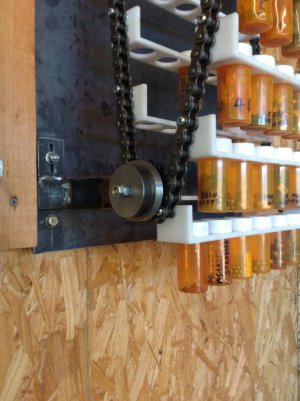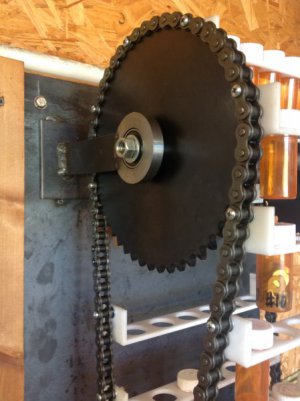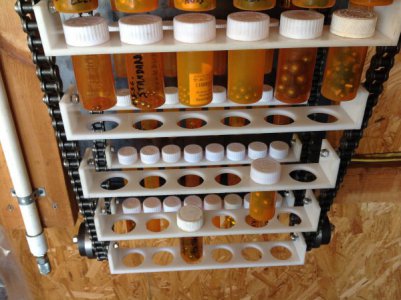Okay, I've completed the second set of cuts: 21 holes 1 3/16" in diameter. You're gonna love this! They came out great!
Here's the strategy I ended up taking:
My first choice - all other things being equal - would have been annular cutters. However, I decided to use S&D drill bits as a first attempt, my logic being that there have been a handful of times in the past when I could have used drill bits that size but didn't have them. I rationalized that if I got the bits and they didn't work, at least I'd have them available if another occasion arose where one would come in handy. (That decision was made a little easier because of the success I had with the 1" holes.) If the results were horrible, I'd just bite the bullet and get the annular cutters. Like they say, you can't take it with you.
I decided to try something that seemed a little radical to me. I wanted to see what the result would be if I tried the cut in one pass - no pilot hole, no intermediate step-up to finished size. I put a piece of scrap in the vise, and the result was great. Did all 21 holes that way, and I was pleasantly surprised how well they turned out. It seems to me, the key to success hinges on three variables: a SHARP bit, slow RPMs and a slow controlled feed rate. The bit was new, RPM was set at 600, and I power fed the quill at its slowest speed.
Next challenge will be the 1 3/8" holes. I'll post pix after they're all finished. (May be another day or two.)
Thanks to all for your wise counsel and suggestions.
Regards,
Terry


